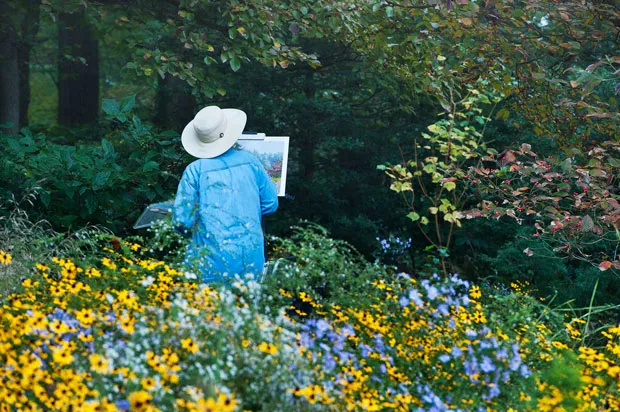The concept of outdoor painting or en plein air ("in the open air") as it's often known, is nothing new. It was most famously a technique used by John Constable for his iconic landscapes and became a fundamental way of working for impressionists during the nineteenth century.
Traditionally artists would mix their own paints, which could be a laborious process; involving grinding pigment powders then mixing them with linseed oil. But by the 1870s, plein air painting had become so popular it gave rise to tubes of paint similar to those we see today, which were far easier to manage in the great outdoors.

So, if you're feeling inspired to get outside with your brushes and paint, then here are some handy hints to make the most of your time alfresco:
- Scout out your location before you go, that way you can fully focus on your art rather than logistics.
- Travel light: Do you really need all those brushes and could you make do with a simplified colour palette?
- Work on a small scale, especially if it's windy. It allows you to hold your board rather than using an easel which may be blown over on a blustery day.
- Collect up a few items to inspire you, such as driftwood, flotsam & jetsam, fir cones, twigs and discarded items.
- Use your mobile phone to take some simple reference snaps. There's no need to carry a large, heavy camera with you.
- Don't bother taking water for painting as you're likely to come across a stream, puddle, the sea or a nearby pub or shop where you can fill your container.
- To ensure that your time outdoors is enjoyable, wear suitable clothing, take drinks, snacks and some sunscreen.
- And finally, concentrate on colours as it will help you recreate scenes once you're back indoors. The light will change quickly but that's one of the joys of being out and about.
Watch Anthony Garratt High and Low Trailer from richard broomhall on Vimeo.